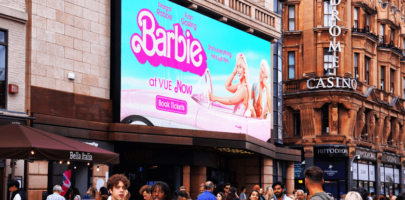Get news, updates, and insights delivered straight to your inbox.
When Global Marketing Tried to Bridge the Cultural Gap—and Missed

![]()
When a tourist goes into a foreign country, there are likely to be some embarrassing or inconvenient moments due to cultural misunderstandings. Brands are susceptible to these cultural gaffes too, only the stakes are much higher. Millions of dollars of man-hours, production costs, and brand value can be thrown out, all because someone didn’t do their homework.
Let’s take a look at some notable examples. They are funny in retrospect, but we bet they weren’t at the time!
P&G
If you’ve got the resources of a giant like Proctor & Gamble, you can afford to do a little focus testing. Unfortunately, that’s not what happened when P&G aired a television commercial in Japan that showed a husband entering the bathroom where his wife was bathing. While this was no big deal in Europe, the Japanese consider this a breach of privacy and etiquette and were very offended.
Starbucks
Sometimes things don’t fit together no matter how much you try. That’s the lesson that Starbucks learned when they tried to enter the Tel Aviv market. They pulled out of Israel after only two years of trying. Some suspect it’s because Starbucks’ “to-go” culture doesn’t appeal to local café enthusiasts who are used to lounging in cafes for hours. Others point out that the average Israeli doesn’t drink much coffee to begin with—less than a coffee a day—and when they do, it’s either an intensely flavorful Turkish coffee or instant powder mix.
Gerber
When Gerber first started selling baby food in Africa, they kept their traditional packaging that used the image of a cute baby on their label. But in certain areas of Africa that had high illiteracy rates, people expected to see a photo of the contents on the package. While it’s likely a rumor that consumers thought there were babies in the jars, it’s probably accurate that sales didn’t go well since people didn’t know exactly what food they were buying.
UPS
UPS’ signature brown trucks are recognizable all over the world—except in Spain, where their trucks had to be redesigned because they looked far too similar to local hearses. Not the kind of delivery you want showing up at your doorstep!
Bharti Airtel
If you’re going to create a localized marketing campaign, make sure you’re localizing to the right levels. Indian mobile phone company Bharti Airtel thought creating a TV ad with savannah images and South African actors was localized enough. However, many African countries actually have savannahs, and using actors from just one country didn’t appeal to the many countries they were trying to target.
Pepsodent
As a toothpaste brand, Pepsodent would naturally promote their ability to give you sparkling white teeth. But when they tried to push that value proposition in Southeast Asia, it backfired. Some cultures in the region chew betel nuts to strengthen their teeth, which also turns them black, so darker teeth are more attractive. Not part of Pepsodent’s list of features, we’re pretty sure.
Mattel
Barbie enjoyed worldwide recognition as the quintessential American female icon, so Mattel thought it would be a good idea to open up a $30 million House of Barbie store in Shanghai. Unfortunately for Mattel, their idea of femininity didn’t mesh with Chinese sensibilities, and as a result, Barbie remained simply a toy more than the icon Mattel was trying to achieve.
Golfing in Fours
There’s a story of an American golf ball company that wanted to introduce their products in Japan but didn’t consider the impact their packaging would have. You see, the Japanese word for the number “four” sounds a lot like the word for “death,” and as a result four is an unlucky number. So when the golf ball company sold their balls in packages of four, people stayed away.
Samsung
In 2013, Samsung released an internal promotional video to be used for the Samsung 840 EVO Series drive. It was misogynistic, badly written, poorly acted, and highly offensive. However, a person who claimed to be one of the actors later went public and said that the performances were carefully choreographed to be the way they were because that’s how the South Korean Samsung execs felt Americans acted naturally.
How about you? Do you know of any marketing campaigns that fell flat on their face abroad thanks to misinterpretations or poor cultural translations?


